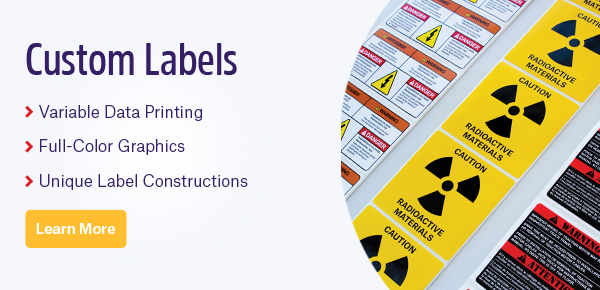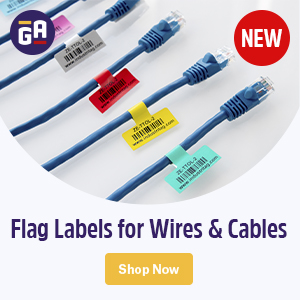![]() Today’s warehouses are more complex than at any point in history. With the introduction of E-commerce and omni-channel operations came a massive uptick in SKUs, warehouse volume, and distribution inflow and outflow. Many businesses have had to juggle these new demands with their drive to increase efficiency, reduce costs, and improve the flexibility and accuracy of their supply and distribution chains. To manage this, identification solutions have adapted as well, with new technology that makes it easier to track and trace each item, regardless of how busy the warehouse gets.
Today’s warehouses are more complex than at any point in history. With the introduction of E-commerce and omni-channel operations came a massive uptick in SKUs, warehouse volume, and distribution inflow and outflow. Many businesses have had to juggle these new demands with their drive to increase efficiency, reduce costs, and improve the flexibility and accuracy of their supply and distribution chains. To manage this, identification solutions have adapted as well, with new technology that makes it easier to track and trace each item, regardless of how busy the warehouse gets.
Integrate mobile printing stations
Label printers have never been manufactured so small. Modern thermal-transfer and direct thermal printers take up relatively little space and can easily be transported from one area of the warehouse to another, essentially removing the need to pre-print large batches of labels in a single location for use throughout the warehouse. This effectively reduces human error by ensuring each label is printed on demand, with no mix-ups.
Label printing stations can be beneficial in a variety of scenarios around warehouses. Putaway tasks are one of the main culprits of time wasting, often requiring personnel to spend time at a centralized printer prior to labeling items. Printing stations allow personnel to perform these tasks immediately, yielding more time for other essential tasks. Picking operations enable personnel to pick up multiple orders at the same time, minimizing travel time and enhancing productivity. Printing stations also remove the need for the storage and pick-up of labels from the office when an advance ship notice arrives; instead, labels can be printed upon receiving the shipment immediately when it arrives.
Use the right label
Using the correct type of label is essential to maintaining an efficient and error-free method of tracking and tracing throughout the warehouse. However, merely using weather-proof or chemical-resistant labels doesn’t guarantee your operations the flexibility needed to thrive. Additional label features may help ensure that storage spaces, such as racks, boxes, crates, and other large containers, can be re-labeled when needed on the fly. There are two main options available for re-labeling:
- Block-out labels: These cover-up labels are one of the fastest ways to re-label racks and containers. Simply apply the label over the old one, completely blocking out all previous information and supplying new barcodes and/or human-readable information.
- Removable labels: Removal labels may be slightly less efficient than block-out labels time-wise, but utilizing these labels prevents old labels from building up underneath each other. They offer a relatively quick method of fully replacing labels where needed.
- Industrial tags: Tags can be easily placed on racks and other containers with hooks. For warehouses, RFID tags or inkjet printable tags printed with barcodes are efficient for re-identification, as they can be quickly replaced when needed.
- Static cling labels and tape: Similar to tags and removable labels, static cling labels and tapes can be quickly lifted off and replaced with new labels. They use static-cling like properties to adhere to various surfaces, ensuring they will not leave any residue upon removal.
RFID
RFID labels offer the most flexibility when it comes to warehouse tracking. Though their primary advantage is scanning multiple items simultaneously without a direct line-of-sight, the ability of RFID tags and labels to encode and re-encode tags makes them a fast and adaptable way to stay up-to-date on all operations in real time. This is especially useful for racks and static containers, but also for tracking inventory for in-going and out-going shipments.
Using RFID has also become adaptable to almost any condition, whether it’s an indoor warehouse or outdoor storage area. Nearly any type of label can come with an RFID inlay, from weather- and temperature-resistant labels to ones that resist chemical exposure, making it possible to construct a specific identification solution tailored to the particular needs of any single entrepot.

